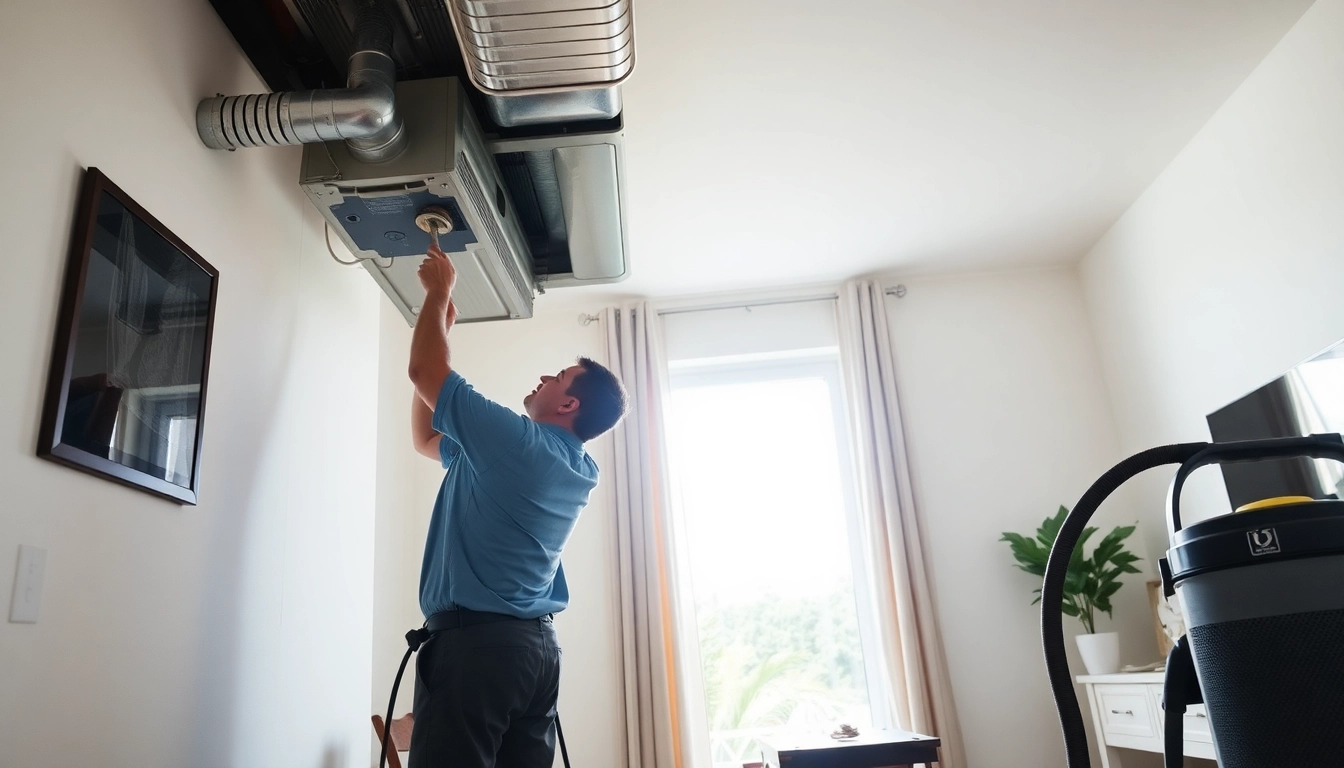Introduction to Automatic Bioethanol Fireplaces
As the quest for sustainable and efficient home heating solutions continues, automatic bioethanol fireplaces have emerged as a compelling alternative for modern households. Combining technology with aesthetics, these innovative heating units allow you to enjoy a warm, inviting fire with a simple push of a button or tap on your smartphone. Unlike traditional wood-burning stoves or gas fireplaces, they operate using bioethanol, a renewable energy source derived from organic materials. The automatic bioethanol fireplace offers convenience, safety, and a stylish element to any space. To explore options for integrating such a unit in your home, check out the range of choices available at Automatic bioethanol fireplace collections.
What is an Automatic Bioethanol Fireplace?
Automatic bioethanol fireplaces are contemporary fireplaces designed to burn bioethanol fuel, which is environmentally friendly and promotes efficient combustion. Unlike conventional fireplaces that require complex setups for flue and venting, these units are designed for easy installation and operation. They often come equipped with electronic ignition systems, flame control features, and remote access options, providing both convenience and flexibility. Users can enjoy the ambiance of a real flame without the hassles associated with traditional heating methods.
Benefits of Using Bioethanol as Fuel
Using bioethanol as a fuel source comes with multiple advantages:
- Eco-Friendly: Bioethanol is a renewable energy source made from plant materials, meaning it produces fewer greenhouse gases compared to fossil fuels.
- Odorless and Soot-Free: Unlike wood-burning fireplaces that emit soot and creosote, bioethanol burns cleanly, ensuring your indoor air remains fresh.
- Easy to Use: Starting and operating an automatic bioethanol fireplace requires minimal effort; the push of a button or use of an app can ignite the flame.
- Flexible Installation: These fireplaces do not require a chimney or flue, allowing for diverse placement options in virtually any room.
- Visual Appeal: With various modern designs available, bioethanol fireplaces can significantly enhance the aesthetic appeal of any living space.
Overview of Key Features
Automatic bioethanol fireplaces usually incorporate several advanced features to improve user experience:
- Electronic Ignition: Safe and reliable ignition systems that minimize risks associated with traditional flame-starting methods.
- Adjustable Flame Control: Users can modify the flame’s intensity or height based on their preferences, often through a remote control.
- Smart Technology Integration: Many models are compatible with smart home systems, allowing users to control their fireplace through voice commands or smartphone applications.
- Safety Sensors: Integrated safety features detect any irregularities in operation, shutting the unit down automatically to prevent accidents.
- Storage Tanks: Some designs include built-in storage for bioethanol, allowing for quick and convenient refueling.
Choosing the Right Automatic Bioethanol Fireplace
Factors to Consider Before Purchase
When selecting an automatic bioethanol fireplace, several factors should guide your decision:
- Size: Measure your space thoroughly to ensure the fireplace fits comfortably without overpowering the room or appearing too small.
- Design Style: Consider the overall aesthetic of your living area and choose a fireplace style that complements your décor – from sleek and modern to classic and traditional.
- Heating Capacity: Assess the fireplace’s BTU output to ensure it meets your heating needs effectively.
- Fuel Consumption: Check the fireplace’s efficiency and how long it can run on a single tank of bioethanol to anticipate running costs.
- Safety Features: Look for models with built-in safety mechanisms, such as automatic shut-off or flame monitoring systems.
Top Brands and Models in the Market
Several brands have made a name for themselves in the automatic bioethanol fireplace market, offering a range of high-quality products:
- Planika: Known for its fully automated systems, Planika incorporates safety sensors and smart controls in its elegant designs.
- Ignis Products: This brand provides advanced burners that are easy to install and come with unique designs emphasizing efficiency and safety.
- A-Fire: Offers a selection of stylish fireplaces that integrate seamlessly with home aesthetics, backed by robust technology.
- Bio Flame: Known for combining luxury and technology, their products often come with intuitive controls and eye-catching designs.
Customer Reviews and Ratings
Consumer feedback plays a crucial role in assessing the efficacy and satisfaction levels with automatic bioethanol fireplaces. Generally, customers praise them for their ease of use and aesthetic charm. However, some reviews highlight issues such as:
- Fuel costs can add up over time, making it essential to consider long-term use.
- Some users report a learning curve in using smart technology features.
Overall, customer ratings often trend positively, indicating satisfaction with several high-performing models on the market.
Installation and Setup Process
Preparing Your Space for Installation
Before installation, thorough preparation can ensure a successful setup of your automatic bioethanol fireplace:
- Check Local Regulations: Some jurisdictions may have specific building codes concerning the installation of bioethanol fireplaces. Always verify these rules to ensure compliance.
- Select the Location: Choose a suitable spot in your home that can accommodate the size and style of your fireplace. Consider visual appeal, proximity to seating, and ventilation.
- Clear Surrounding Area: Ensure the area around the installation site is free of flammable materials and clutter to provide a safe environment.
Steps for Safe Installation
Follow these steps to safely install your automatic bioethanol fireplace:
- Unpack and Inspect: Carefully remove the unit from its packaging and check for any shipping damage or missing parts.
- Position the Firebox: Place the fireplace in your chosen location, ensuring it is on a level surface and securely situated.
- Connect Fuel Storage: Install any included fuel storage tanks or reservoirs based on the manufacturer’s instructions.
- Install the Burner Unit: Position the burner within the firebox and secure it per the guidelines.
- Testing: Always conduct a test burn following the manufacturer’s guidelines to ensure the fireplace operates correctly and safely.
Common Mistakes to Avoid
To ensure successful installation and operation, here are common pitfalls to avoid:
- Insufficient Space: Ensure there is enough clearance around the fireplace for safety and functionality.
- Ignoring Local Codes: Skipping verification of local installation codes and regulations can lead to fines or unsafe conditions.
- Neglecting User Manuals: Failing to follow the manufacturer’s instructions can result in malfunction or safety hazards. Always read and adhere to the guidelines provided.
Maintenance Tips for Longevity
Regular Cleaning Protocols
Maintaining your automatic bioethanol fireplace involves more than just regular use. Here are helpful cleaning protocols:
- Clean the Burner: Remove any residue or soot from the burner regularly to ensure optimal performance.
- Wipe the Surrounding Area: Dust and clean the area around the fireplace to maintain a pleasant aesthetic.
- Check for Leaks: Periodically inspect the fuel tank and any connections for leaks or wear.
Fuel Management and Replacement
Managing your fuel supply is essential for efficient use:
- Store Bioethanol Safely: Keep bioethanol in a cool, dark place, away from direct sunlight and heat sources. Always use the fuel recommended by the manufacturer to prevent damage.
- Refill Responsibly: Always turn off the fireplace and allow it to cool down before refilling the fuel tank for safety.
Identifying and Resolving Common Issues
Like all appliances, automatic bioethanol fireplaces may face issues over time. Common problems include:
- Flame Diminishing: This can result from fuel being low or burnt fuel residue clogging the burner. Regular maintenance will mitigate this issue.
- Smoking or Smelling of Fuel: If smoke or a fuel smell occurs, it may indicate a problem with the burner or fuel supply. Immediate investigation is necessary to rectify this.
Innovative Trends in Ethanol Fireplaces
Smart Technology Integration
The integration of smart technology into automatic bioethanol fireplaces is transforming how homeowners interact with these units. From mobile apps that allow remote control to voice-activated features through smart home assistants like Amazon Alexa or Google Home, the ease of operation is unparalleled. Users can adjust flame heights, set timers, and turn the unit on or off from afar, enhancing both convenience and safety.
Design Innovations for Modern Homes
Design trends in bioethanol fireplaces are evolving, with manufacturers focusing on aesthetics that complement modern home interiors. Sleek, minimalist designs are particularly popular, with less emphasis on traditional fireplace structures. Additionally, customizable options enable homeowners to select finishes and styles that blend seamlessly with existing décor, spanning from ultra-modern to rustic designs.
Environmental Impact and Future Prospects
The growing interest in environmental sustainability has spurred innovation in bioethanol fireplace technology. With reduced emissions and eco-friendly fuel options, automatic bioethanol fireplaces are positioned as a central feature in sustainable home design. As consumer awareness of environmental issues grows, the market for these fireplaces is expected to expand, potentially leading to even more advanced features and efficiencies.



